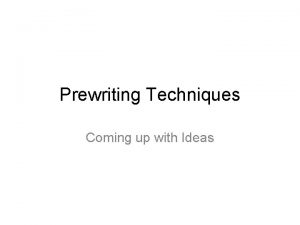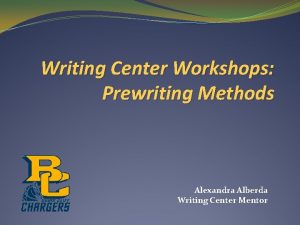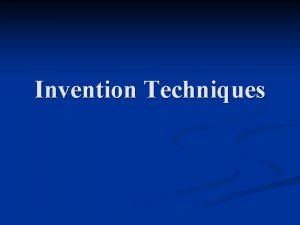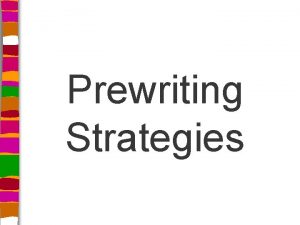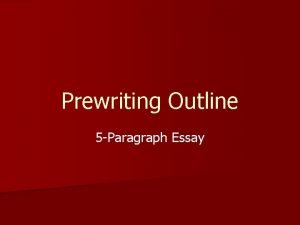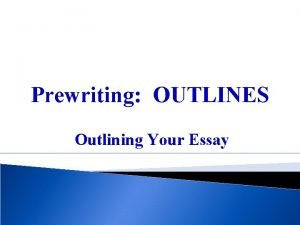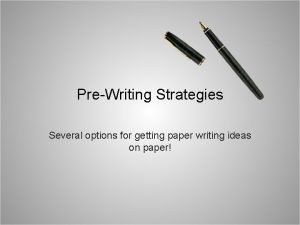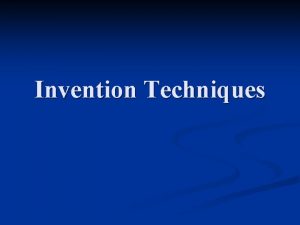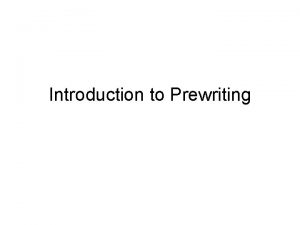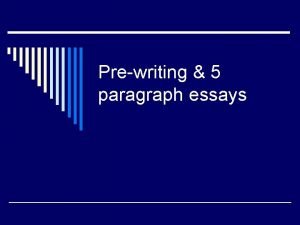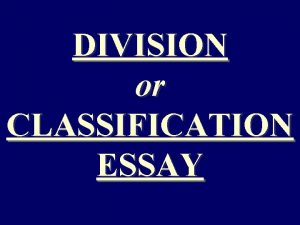Invention Techniques Invention or Prewriting n There are











- Slides: 11

Invention Techniques

Invention or Prewriting n There are many strategies for coming up with ideas and developing essays. n You should n try the suggested techniques; n develop your own strategies and find what works for you; n recognize the process may be a little different for each paper.

Invention Techniques n n n n Brainstorming: alone or in groups Freewriting: writing without stopping Reading and discussing: sharing ideas Clustering: developing related ideas Questioning: asking and answering questions Outlining: making a formal list of topics and subtopics Starting with Contexts and Rhetorical Situation: Aristotle’s Topoi, playing a role, writing for work, etc. Using Tagmemics: employing a formal linguistic tool

Freewriting n n n Freewriting--designed to “free up” your thinking so you can generate ideas first without selfediting. Write without stopping. Start with a topic or just write about anything that comes to mind. Don’t worry about grammar, spelling, etc. Keep writing for ten minutes or more. Find an interesting idea or sentence in your text and circle it. Write that on the top of a new page and start another freewriting (looping).

Tagmemics n Three ways of looking at a topic: n As a PARTICLE (the thing itself) n As a WAVE (changes over in time) n As part of a FIELD (in context, in relationship to other things)

Tagmemics: Particle Static View n Describe the topic (person, place, or thing) in detail, with all its parts. n Consider its structure and uses. n Consider how you think and feel about it now. n

Tagmemics: Wave Dynamic--Changes over time. n Consider your topic in the past. n Consider its future. n Consider your changing perspective, your view in the past. n Consider your possible view in the future. n

Tagmemics: Field n Contexts and Relationships n Compare and contrast: Think of your topic in relationship to others like and unlike it. n Classify it. n Find an analogy or metaphor for it.

Asking Questions Who? n What? n When? n Where? n Why? n How? n

Rhetorical Situation Play a Role n Solve a problem n Define your purpose n Analyze your topic n Analyze your audience n

Finding a Focus n Answer a specific question to form a thesis. For example, why do young people join gangs? § Your thesis will be an answer to that question: “Young people join gangs because…. ” n Nutshelling: state your thesis in one
 Mikael ferm
Mikael ferm Prewriting techniques
Prewriting techniques Prewriting techniques
Prewriting techniques Invention strategies for writing
Invention strategies for writing Invention techniques in writing
Invention techniques in writing What does prewriting mean
What does prewriting mean Ano ang kaisahan sa pagsulat
Ano ang kaisahan sa pagsulat In what way is clustering a helpful prewriting strategy?
In what way is clustering a helpful prewriting strategy? Prewriting outline
Prewriting outline Markothepencil.com
Markothepencil.com Outlining in prewriting
Outlining in prewriting Example of cubing
Example of cubing

